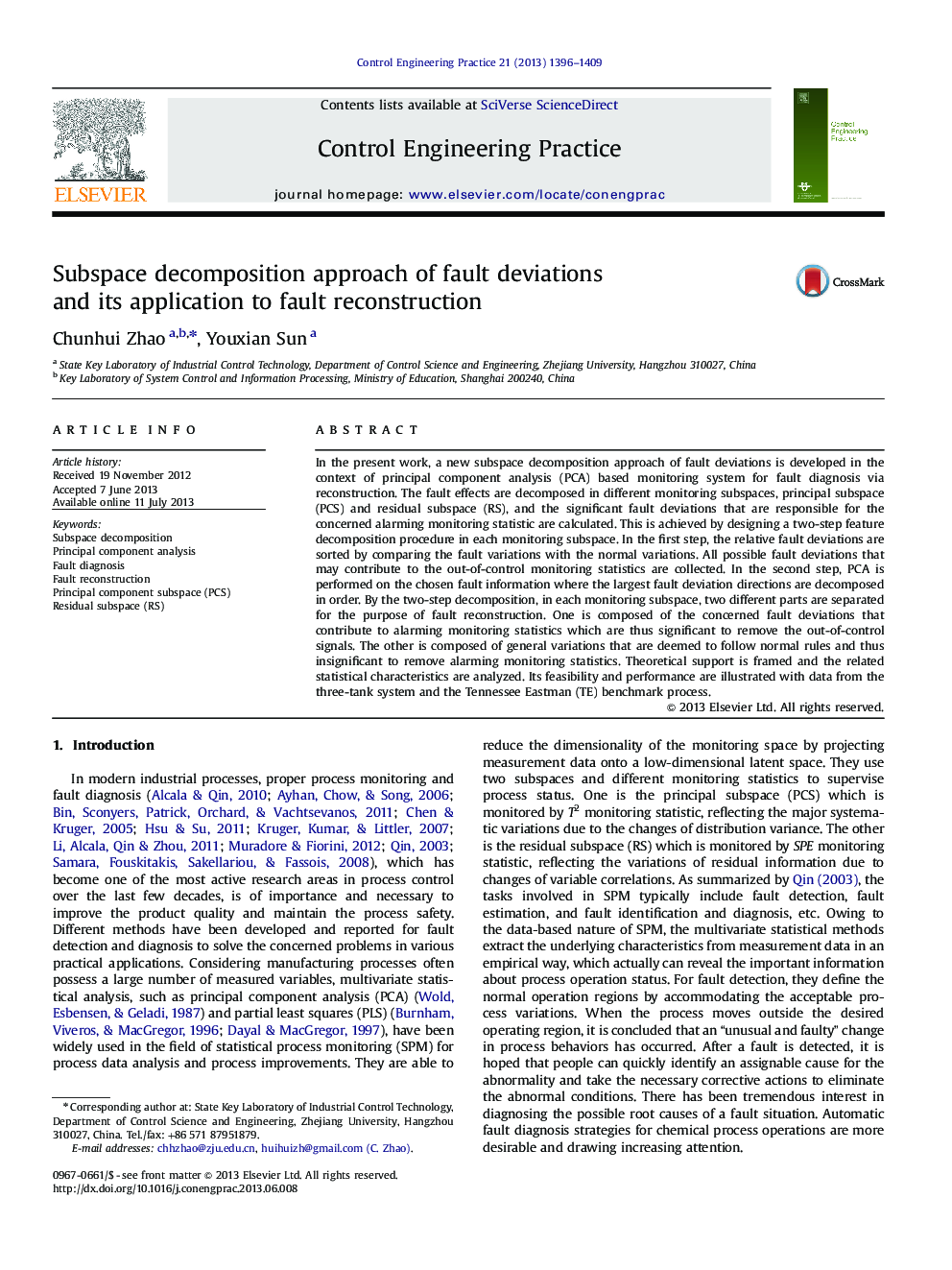| کد مقاله | کد نشریه | سال انتشار | مقاله انگلیسی | نسخه تمام متن |
|---|---|---|---|---|
| 699653 | 890784 | 2013 | 14 صفحه PDF | دانلود رایگان |

• Subspace decomposition of fault deviations is performed for fault diagnosis.
• The relative changes from normal to fault in each monitoring subspace are analyzed.
• Significant fault deviations responsible for alarming statistics are extracted.
• It reveals more meaningful fault information and better diagnosis performance.
In the present work, a new subspace decomposition approach of fault deviations is developed in the context of principal component analysis (PCA) based monitoring system for fault diagnosis via reconstruction. The fault effects are decomposed in different monitoring subspaces, principal subspace (PCS) and residual subspace (RS), and the significant fault deviations that are responsible for the concerned alarming monitoring statistic are calculated. This is achieved by designing a two-step feature decomposition procedure in each monitoring subspace. In the first step, the relative fault deviations are sorted by comparing the fault variations with the normal variations. All possible fault deviations that may contribute to the out-of-control monitoring statistics are collected. In the second step, PCA is performed on the chosen fault information where the largest fault deviation directions are decomposed in order. By the two-step decomposition, in each monitoring subspace, two different parts are separated for the purpose of fault reconstruction. One is composed of the concerned fault deviations that contribute to alarming monitoring statistics which are thus significant to remove the out-of-control signals. The other is composed of general variations that are deemed to follow normal rules and thus insignificant to remove alarming monitoring statistics. Theoretical support is framed and the related statistical characteristics are analyzed. Its feasibility and performance are illustrated with data from the three-tank system and the Tennessee Eastman (TE) benchmark process.
Journal: Control Engineering Practice - Volume 21, Issue 10, October 2013, Pages 1396–1409